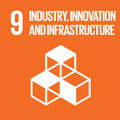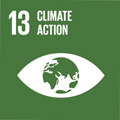- Docente: Gabriele Bitelli
- Credits: 6
- SSD: ICAR/06
- Language: Italian
- Moduli: Gabriele Bitelli (Modulo 1) Stefano Gandolfi (Modulo 2)
- Teaching Mode: Traditional lectures (Modulo 1) Traditional lectures (Modulo 2)
- Campus: Bologna
- Corso: Second cycle degree programme (LM) in Environmental Engineering (cod. 8894)
-
from Apr 30, 2025 to Jun 13, 2025
-
from Feb 19, 2025 to Apr 16, 2025
Learning outcomes
The course aims to provide knowledge relating to high-productivity geomatic survey techniques (GNSS_NRTK; Aerial and Terrestrial Laser Scanning; MMS and UAV by digital photogrammetry) both from the point of view of the necessary instrumentation and data processing.
The course is aimed at providing the student with the ability to identify the most appropriate geomatic methodologies for carrying out technical and precision surveys.
Course contents
The course is divided into two parts.
PART 1 (S. Gandolfi)
GNSS satellite positioning systems.
General features.
GPS system error modeling.
Types of positioning methods using GNSS systems: Relative Static, DGPS, Static Kinematic, RTK, NRTK Networks.
Reference systems and coordinate systems for positioning: ITRS and ETRS international systems. Geodetic frames ITRFyy, ETRFnn.
Coordinate systems and their transformations: geocentric, ellipsoidal, local geodesic, three-dimensional polar coordinates.
The new Italian Geodetic System and ETRF00 frame.
Static and dynamic geodetic networks.
Least Squares Method
Adjustment method of indirect observations and Least Squares criterion.
Functional and statistical model of adjustment, characteristics of the estimates obtained.
Construction of the adjustment model for traditional measurements and GPS baselines.
Phases of network adjustment: design, quality analysis through statistical tests, framing through constrained adkustment or adaptation by conformal transformation.
Statistical tests of significance of movements.
PART 2 (G. Bitelli)
Introduction to modern geomatic techniques for point clouds and surface generation.
Terrain and Surface Digital Models.
TIN and GRID data structures.
Interpolation of data, conversion from point cloud to a numerical model (mesh) of the surface.
Choice of the interpolation model.
Derivative products and potential for use in environmental GIS applications.
Laser Scanning and other 3D scanning systems.
General characteristics of LiDAR systems.
Airborne Laser Scanning (ALS): description of the system, data processing and filtering techniques, classification, derivative products. Applications on a territorial scale: risk management, vegetation and forests, 3D City Models.
Terrestrial Laser Scanner (TLS) for structures and infrastructures and other scanning systems for small objects (triangulation, structured light projection): description of technologies, design and realization of a survey, data processing procedures and 3D modeling, derivative products. Applications to the survey of complex structures, landslides, quarries, cultural heritage, industrial applications.
Mobile Mapping Systems (MMS), integration of positioning and 3D acquisition sensors, applications.
Digital photogrammetry for the derivation of 3D point cloud models: from the basic theoretical aspects of photogrammetry to modern techniques based on Computer Vision algorithms. Complementarity of image-based and range-based methods.
Short notes on the methods and potential of Remote Sensing from satellite, aircraft and drone (UAV).
Readings/Bibliography
Didactic material (handouts and slides) is released on the online Virtuale platform.
Further bibliographic suggestions:
- Cina A.: Dal GPS al GNSS (Global Navigation Satellite System), ed. CELID, 2014
- Vosselman G., Maas H.: Airborne and Terrestrial Laser Scanning, Whittles ed., 2010
- Dong P., Qi C.: LiDAR Remote Sensing and Applications, CRC Press, 2018
Teaching methods
The course is mainly provided through in presence lectures that allow students to stimulate the critical ability to apply surveying and calculation techniques (also presented in the Handouts) to practical problems, highlighting the need for a professional approach.
In order to realize the information that can be acquired in the field, exercises are also carried out outdoor with GNSS satellite detectors and with 3D scanning acquisition systems.
The data processing aspects are supported by computer exercises, mainly carried out with open source software installed on the students' computers.
Assessment methods
Verification of learning success takes place in a final written exam, with open and closed questions, which ascertains the acquisition of the expected knowledge and skills and the ability to tackle a surveying/monitoring problem and calculation of the type discussed in class.
The correction is made immediately upon completion; during the review, the examiners inform the student about the correction criteria, receive any clarifications from the student and decide whether to modify the judgment after an oral examination.
Failure to pass the exam may be due to insufficient knowledge of the key concepts and lack of command of the technical language indicating a confused view of the typical problems of the subject.
Teaching tools
Didactic material made available on the online Virtuale platform.
Exercises with the use of specialized software on personal notebooks.
Use of multimedia support.
Office hours
See the website of Gabriele Bitelli
See the website of Stefano Gandolfi
SDGs



This teaching activity contributes to the achievement of the Sustainable Development Goals of the UN 2030 Agenda.
